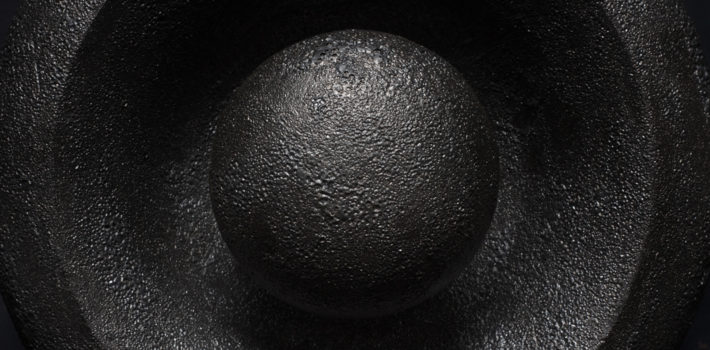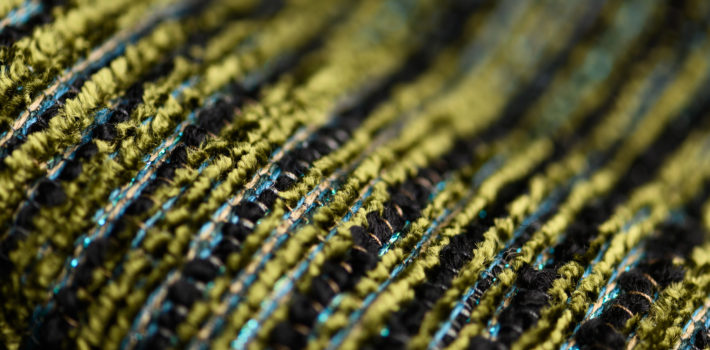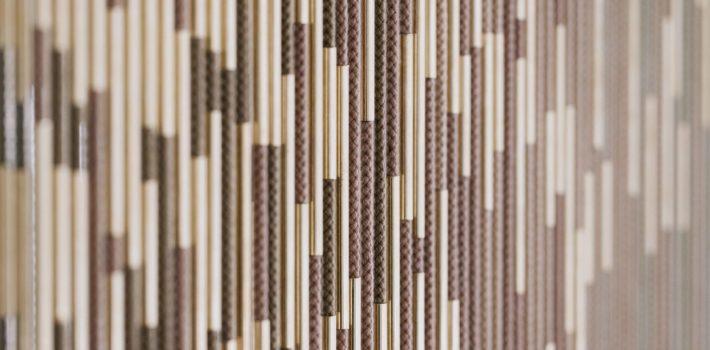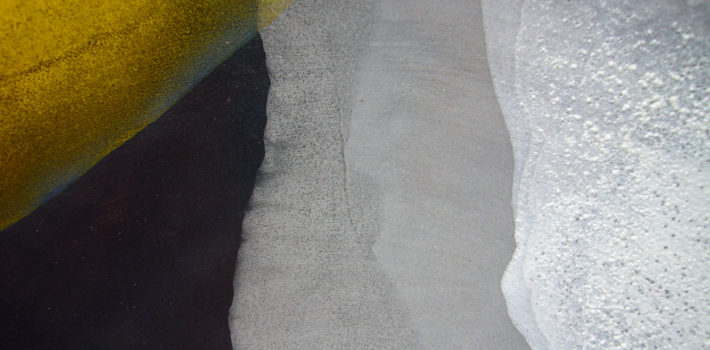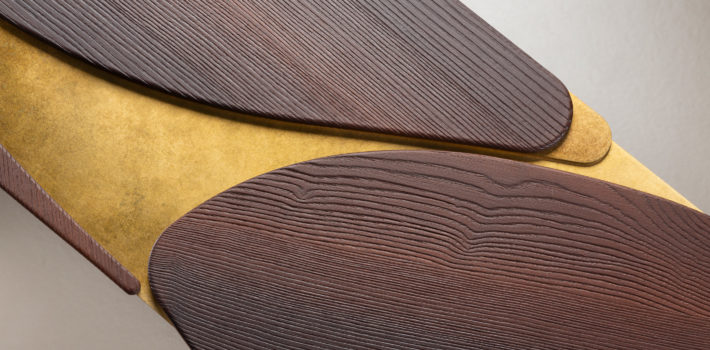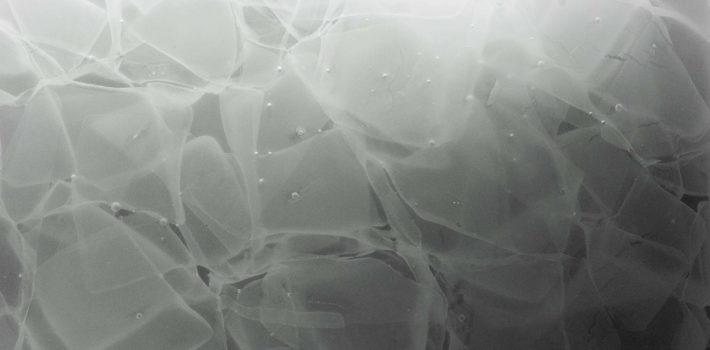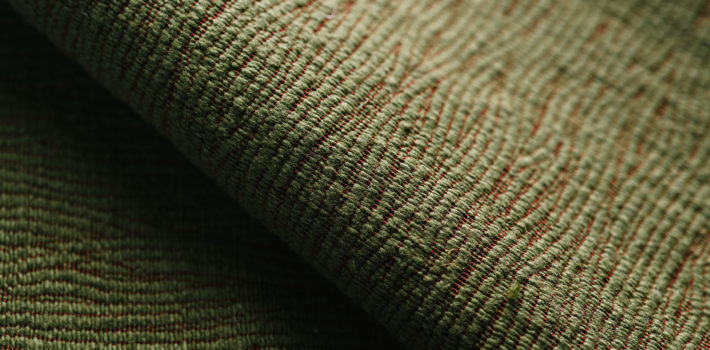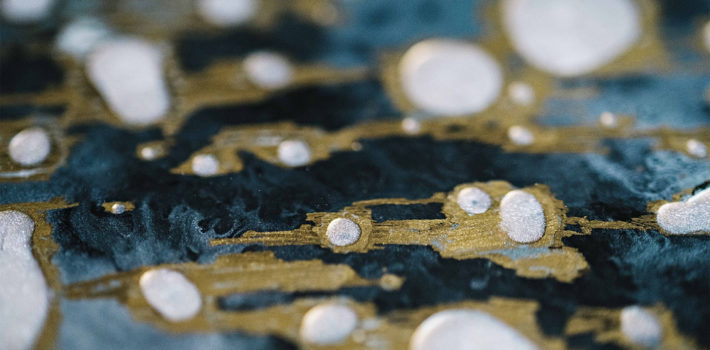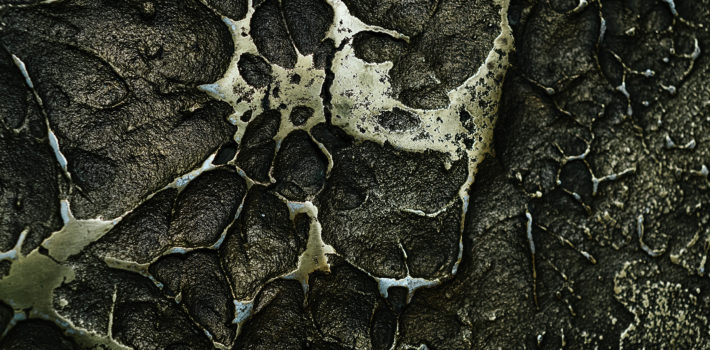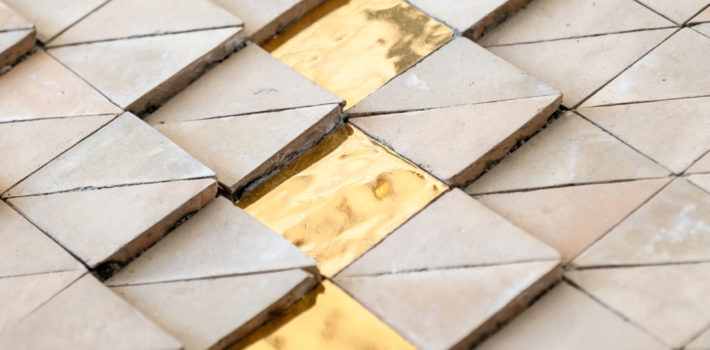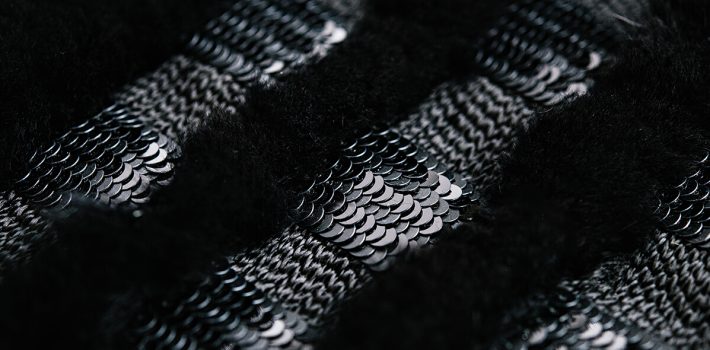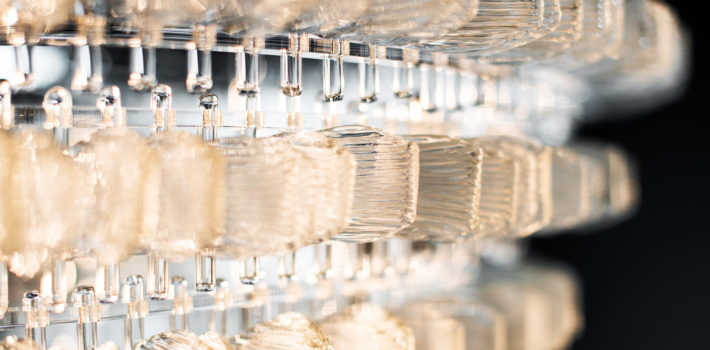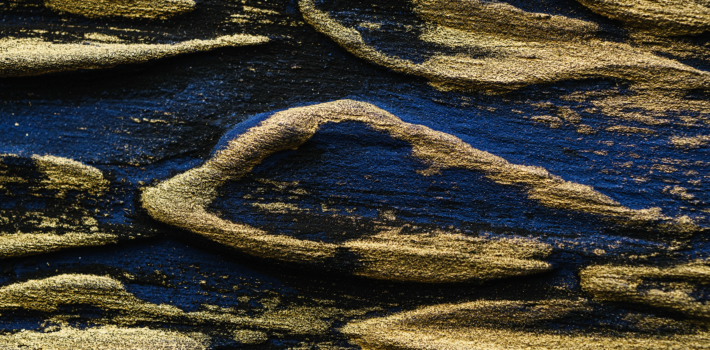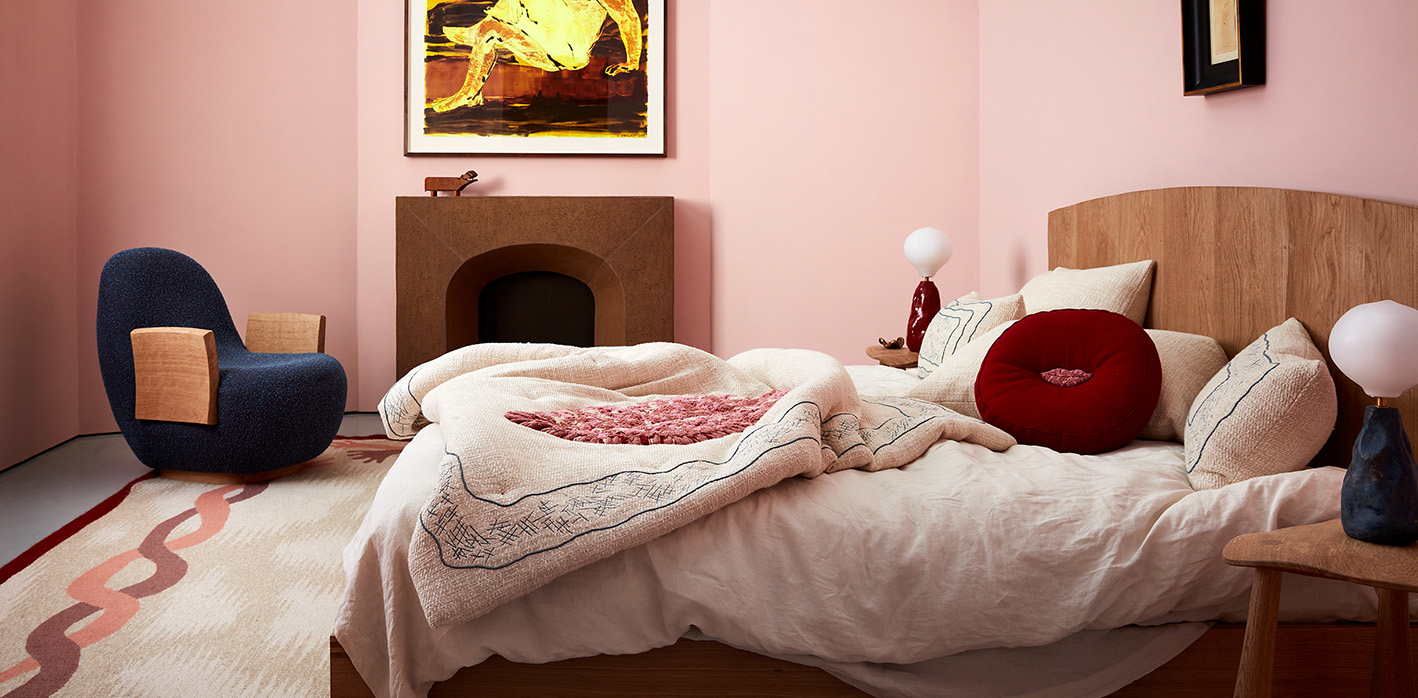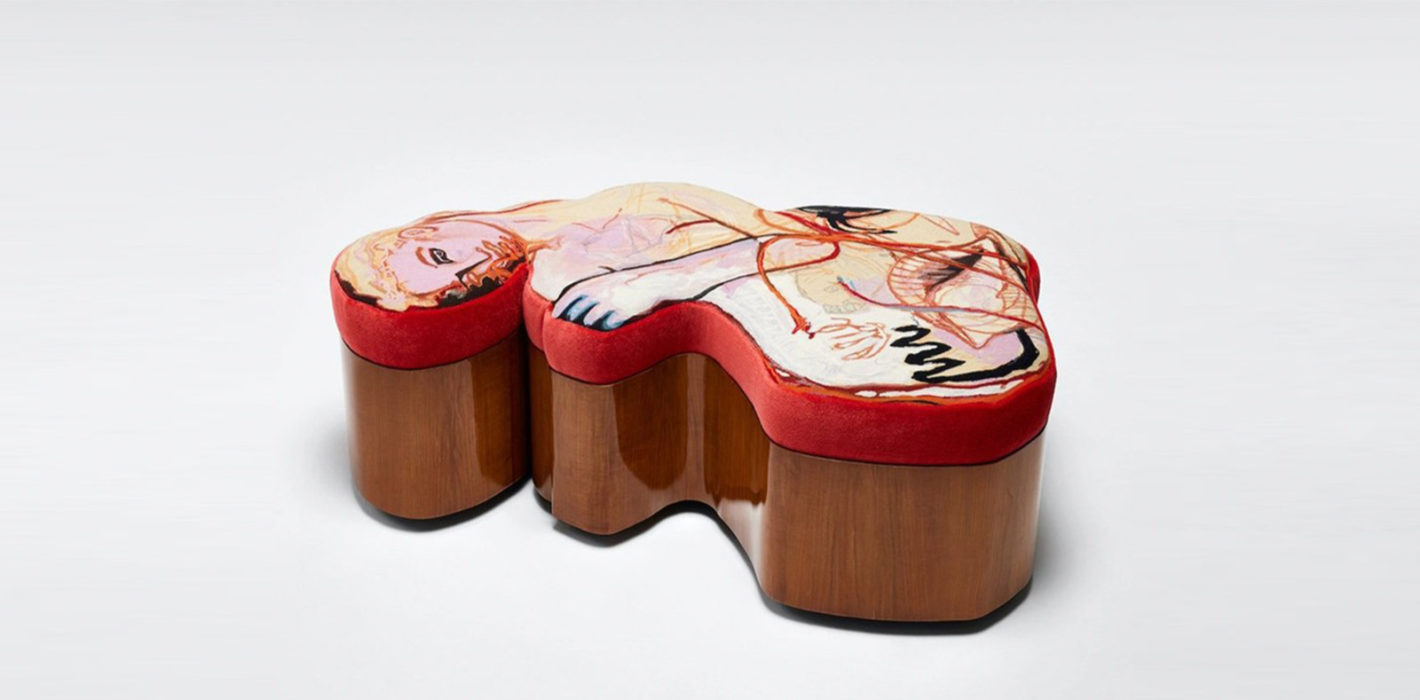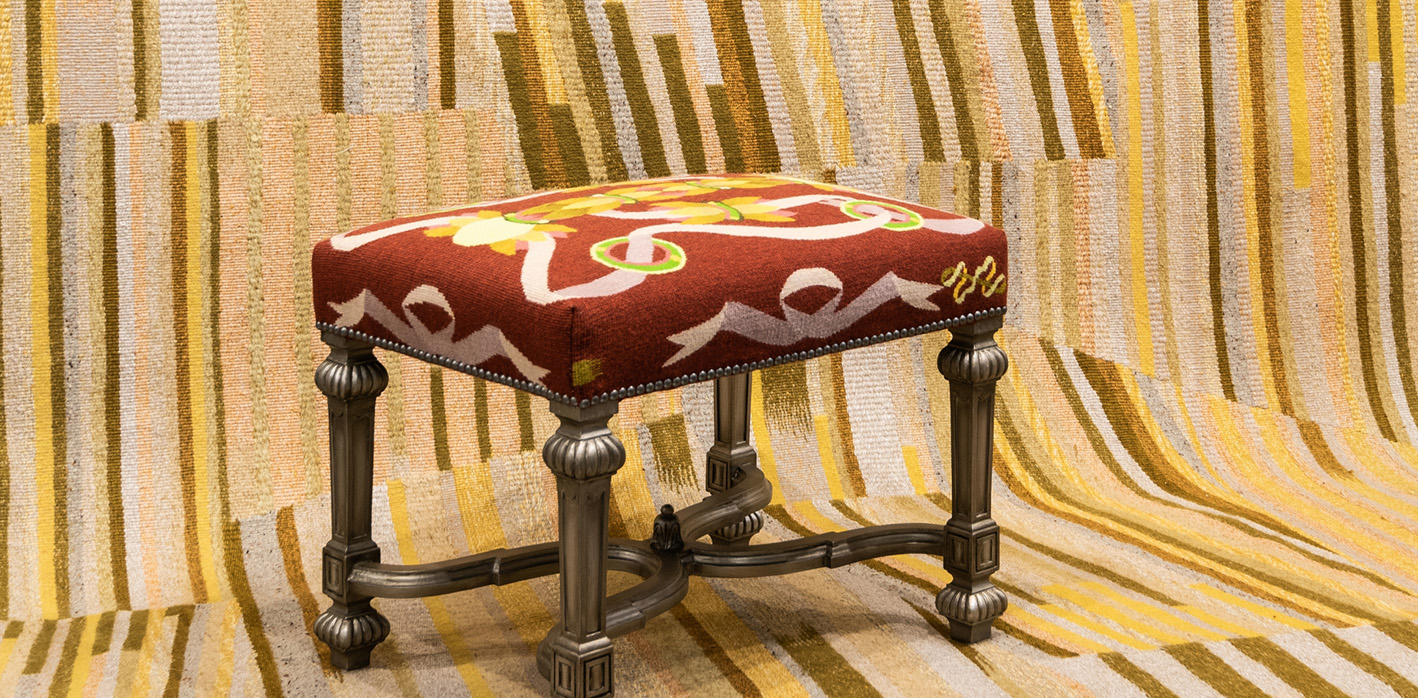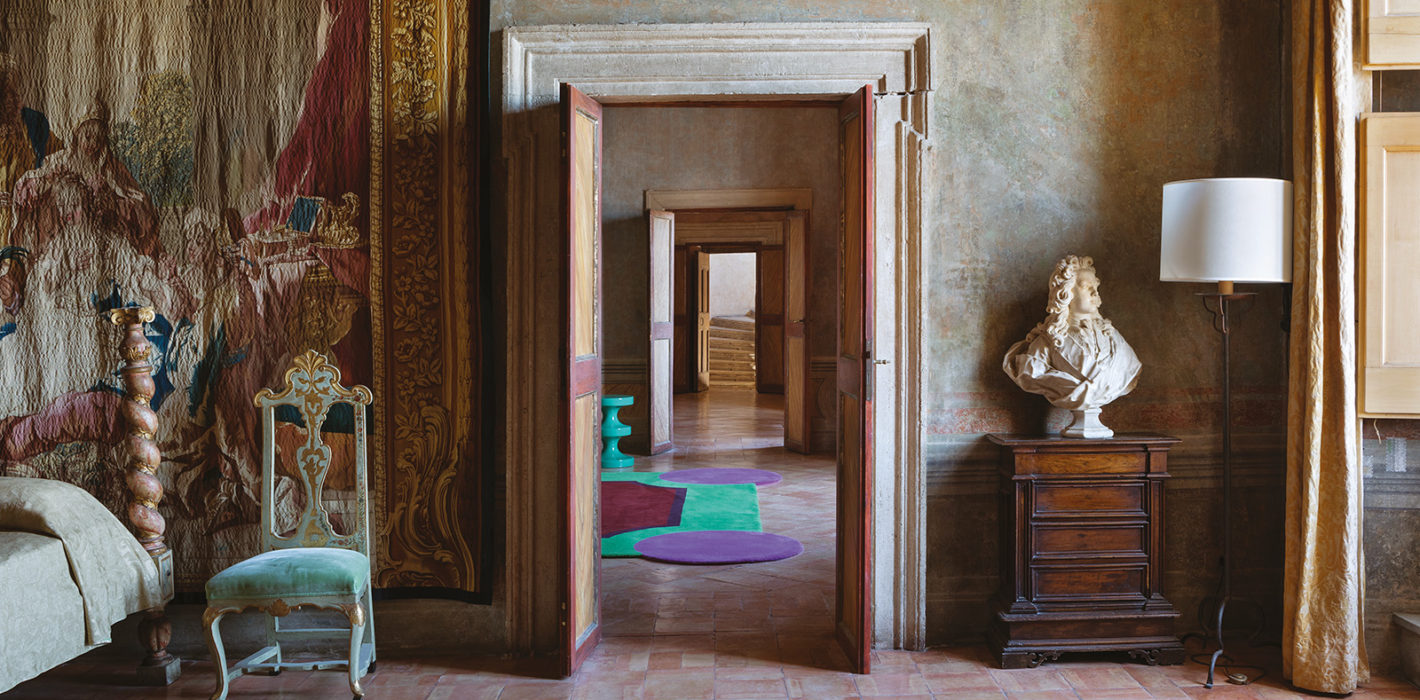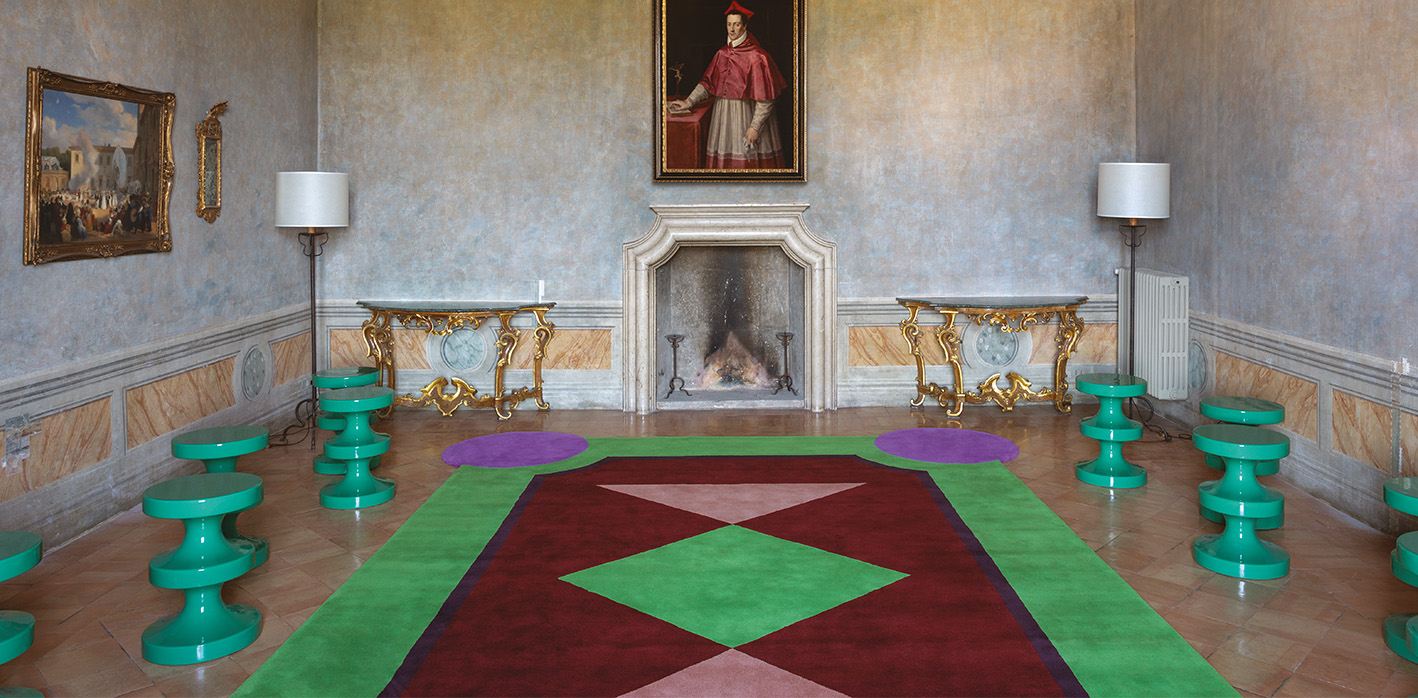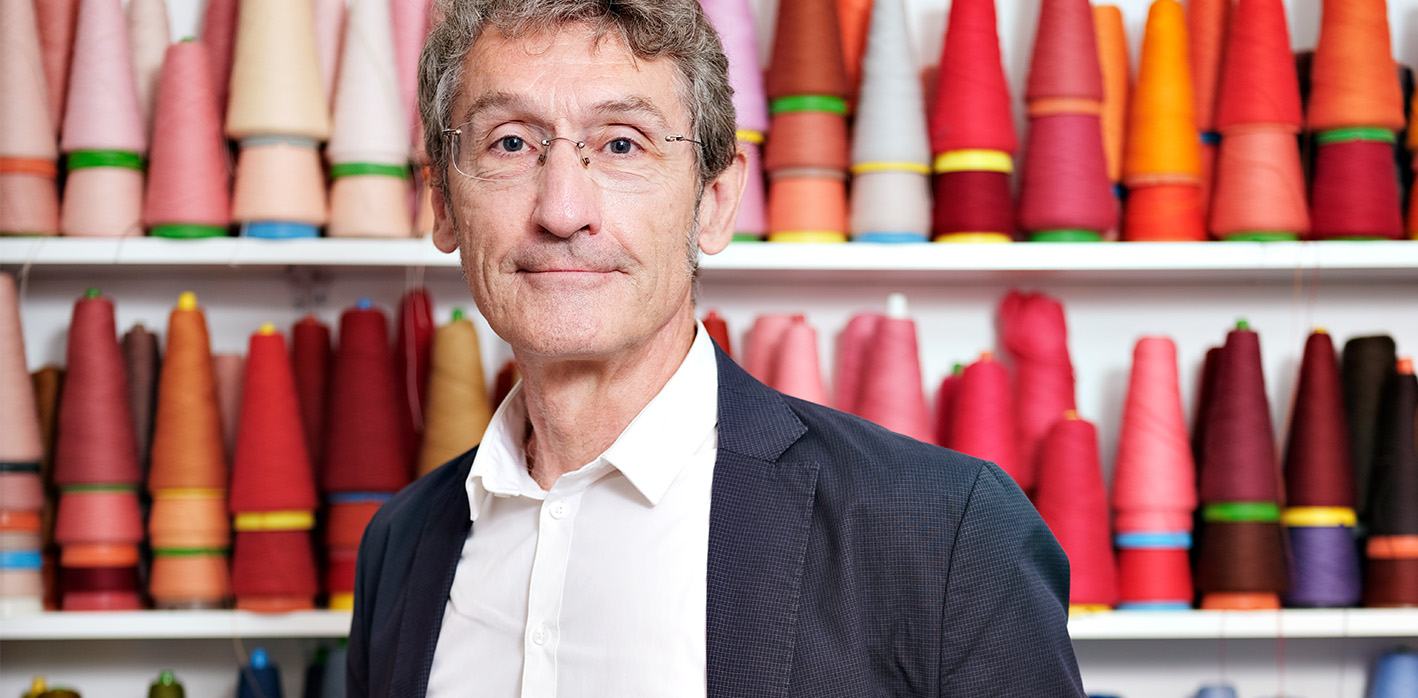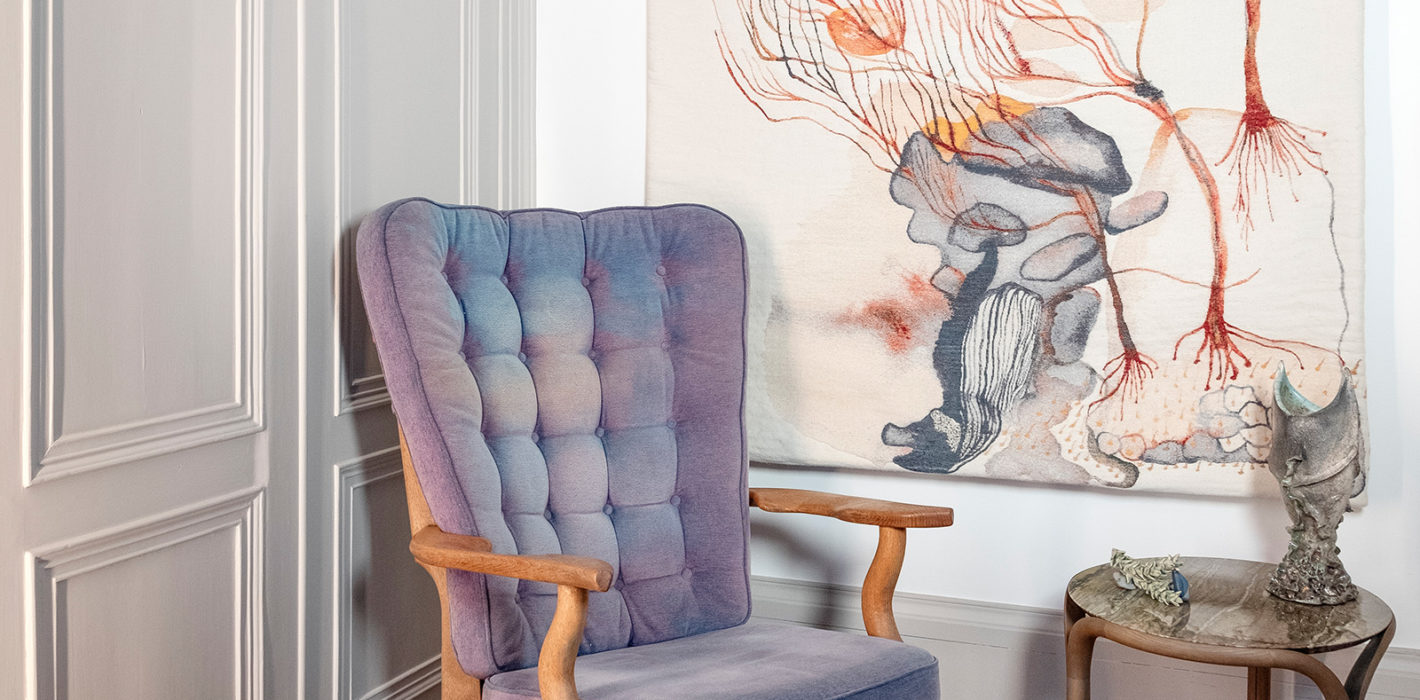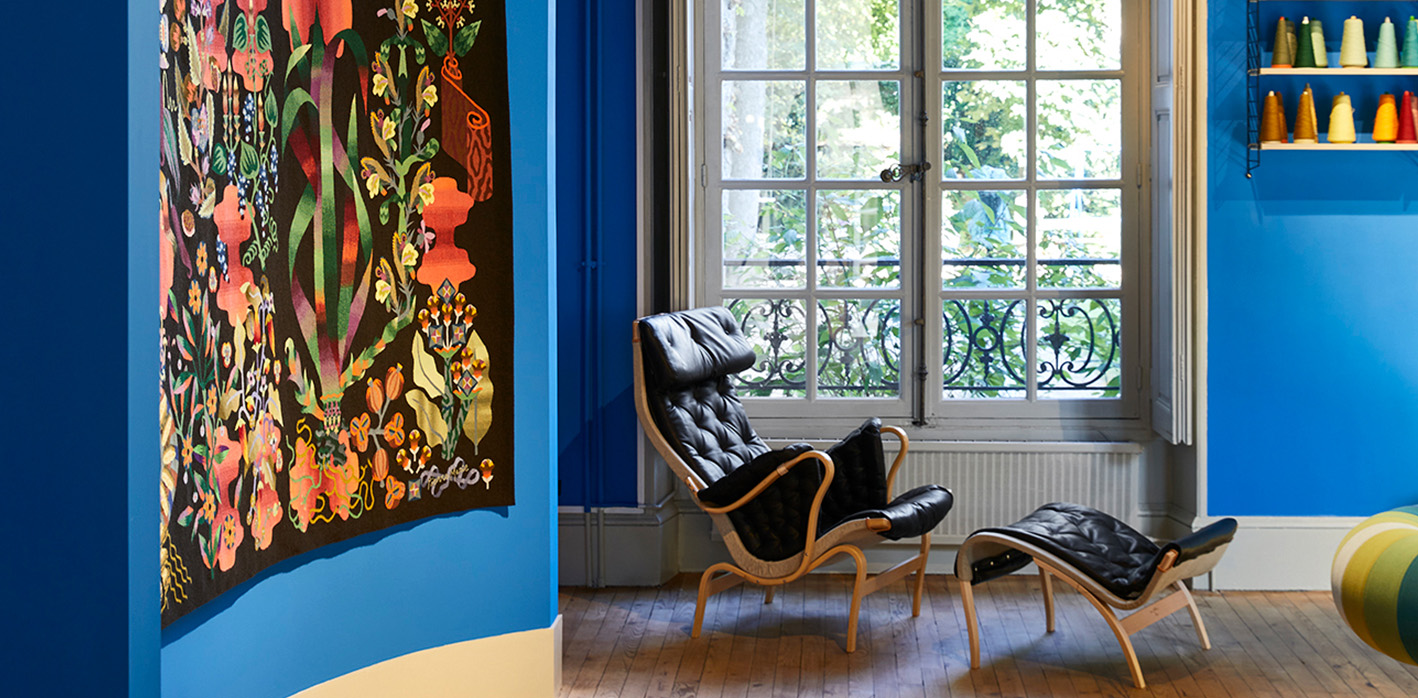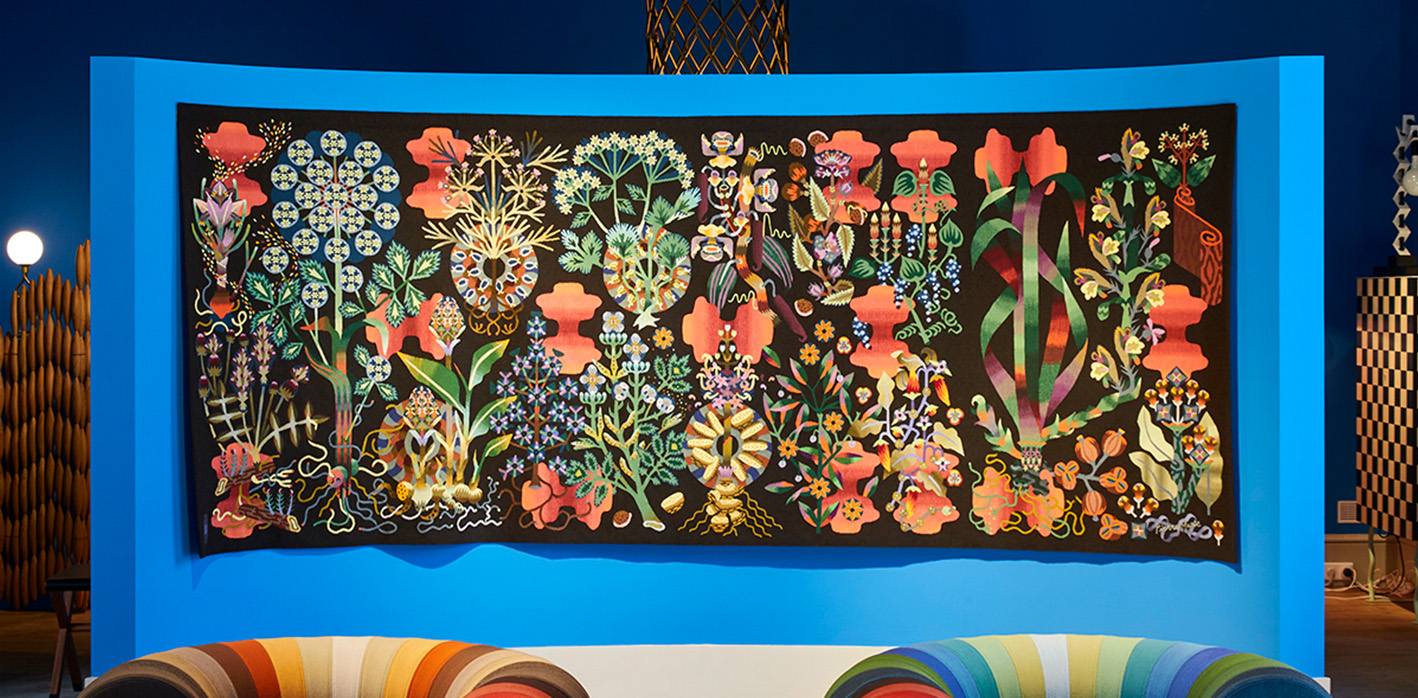Patricia Racine
Artistic Director of the Robert Four Manufacture
Artistic Director of the Robert Four Manufacture, Patricia Racine shares her international journey here, from Kenzo to Tai Ping, and explains how she has brought a new breath of life and a unique style to this iconic institution of exceptional craftsmanship. By blending tradition and innovation, she ensures that the woven art of Aubusson continues to fascinate and inspire artists, architects, and decorators.
What was your career path before joining La Manufacture Robert Four?
I began with a business school education, then worked for six years at Kenzo, part of the LVMH Group, during Kenzo Takada’s time. This experience allowed me to develop a unique sense of color and an appreciation for patterns and designs, as well as the codes of an emotional business. I then joined Tai Ping as an artistic director and business developer. Over ten years, thanks to the carpet and rug collections developed by the design studio I initiated, the brand established itself internationally, becoming influential in its market. Serving both retail and B2B sectors has become my strength today in building a vision for Robert Four. My curiosity and passion for meeting people from all walks of life and cultures have given me the conviction to practice my profession as a bridge between those who create through the arts and those who bring ideas to life through materials, with the sole purpose of serving beauty.
What were the major milestones of the Manufacture before your arrival?
Before being declared a Manufacture in Aubusson in 1952, Robert Four was known as the Atelier Simon André in Felletin, weaving the last tapestries of Jean Lurçat during his lifetime. At that time, tapestry had fallen out of fashion, and clients were scarce. However, Robert Four, a charismatic young entrepreneur, believed that by creating a collection of artists and finding clients through his own sales force, he could grow the business. He pursued this vision and made the preservation of ancient weaving techniques a family commitment. He later opened a gallery in Saint-Germain-des-Prés, Paris, a favorite spot for American connoisseurs and decorators passionate about heritage. In the 1990s, Robert Four opened a subsidiary workshop in Ezzahra, near Tunis, transferring the exact Aubusson weaving techniques to Tunisian artisans while preserving all the looms at the Manufacture. One of his sons, Pierre Olivier Four, aimed to continue this commitment and took over the presidency of the Manufacture in 1996. Notable projects such as weaving one of the three Guernica tapestries by Picasso and creating immense Savonnerie carpets for private clients established Robert Four as the ideal partner for exceptional productions. Since 2012, the Manufacture has compiled numerous artistic collaborations, firmly establishing itself in all sectors of art, both contemporary and decorative, internationally. Today, this woven art is recognized as a rare skill, an exceptional tool with expert artisans passionate about their craft, and a creative studio, Aux Verdures, based in Paris.
How did your meeting with Pierre-Olivier Four come about?
Pierre Olivier Four recently told me, “Our meeting was fortunate; we needed you, and you needed us.” Robert Four had been a reference for the production of Savonnerie carpets but had shifted focus to the promotion of Aubusson tapestry. My experience at Tai Ping had made me an expert in selling custom rugs to architects. My next step needed to reveal a rare French craftsmanship. I felt that mastery in craftsmanship would become an essential added value. At that same time, Emmanuel Gérard, who would become the director of the Cité de la Tapisserie in Aubusson, was cataloging all the actors involved in the French textile sector. His introduction to Pierre-Olivier Four had an immediate resonance, and I am still grateful to him for that. Reviving the name of Aubusson and making it the epitome of rugs and tapestries became my obsession.
What have you brought to Aubusson?
My conviction in practicing my profession has always been to give meaning to the product to create desire. I believed that while preserving the heritage identity, the woven products of Aubusson needed to meet the perception and image that clients have of a rug or tapestry. Why should an Aubusson rug forever be made of classic designs and fine weaving? I started by sourcing new yarns like mohair, linen, and unique silks to enhance texture and give a sense of comfort. Who are the contemporary artists who could help me write a new chapter for Aubusson tapestry? I initiated new collaborations. I wanted the Robert Four Manufacture to be entrusted with commissions for producing something different. I then developed a recognizable style. Thus, Robert Four becomes a label of craftsmanship, beyond just a brand. I knew the success of this mission would be conditioned by the artisans of the Manufacture embracing these ambitions.
You chose to incorporate new materials into Aubusson rugs.
Why, and what is your view on this decision today?
New yarns create new textures, allowing for innovation and exploration while preserving the use of natural, locally sourced fibers. The acquisition of the Néolice workshop in Felletin, dedicated to digital weaving for a new generation of tapestries, is another magnificent field of exploration. It’s gratifying to see that the woven art of Aubusson, through the lens of Robert Four, still holds beautiful surprises and that new yarns compatible with this new technique will offer new woven materials.
You regularly collaborate with artists. What does their vision, narrative,
and aesthetic approach bring to the Manufacture?
The past centuries have proven that the involvement of artists has made the history and even the reputation of Aubusson. Robert Four is as much a manufacture as it is a brand, and it must present an artistic point of view. This perspective is perceived in the production style, the implementation, and the choice of artists, as well as in the relevance of adding the tapestry’s prism to their work. The first collaboration with artist Pierre Marie for the Ras el Hanout tapestry proved that tapestry in the 21st century has its rightful place, thanks to the artistic quality of its design. One of the latest collaborations around the tapestry “Studies into the Past” by artist Laurent Grasso, represented by the Perrotin gallery, establishes Robert Four as a reference in contemporary art. Artists renew the graphic history of tapestry or rugs with their personal visions and agree that tapestry brings a new dimension to their artistic work.
What drives you in your work?
No experience is ever the same as the last. This diversity leaves no room for boredom. Developing a project, responding to a commission, also allows artisans (weavers, dyers, and designers) to practice their craft. It’s about contributing to the renewal of artisanal know-how, living through the most beautiful projects in the world, and sharing moments with artists around their work while projecting the Robert Four brand towards international recognition. What more could one ask for?
What are your development goals and aspirations for the Robert Four Manufacture?
Our production studio remains available for special projects, but to become more accessible, we are also developing ready-to-recolor or resize rugs. The time has also come to collaborate with more artists to offer a wide range of tapestries, thanks to our digital tapestry skills at Néolice. At the Milan Salon 2024, we presented a first collection of ottoman poufs in tapestry, signed by Marie Victoire de Bascher.
How did the meeting with Collection Latil go, and why did you join the Collection?
I had known Anne-Sophie Latil and her activity for a long time and had followed its incredible evolution. She has expertise in rugs and the markets we target, a rare combination. When we considered entrusting her with a mission to help us expand our reach, we met a team at Collection Latil that was just as competent, friendly, understanding of our demands, and reassuring in their approach. We embarked on the adventure together…
Find the Robert Four Manufacture in the Collection and Address Book sections as well.
Photos : ©Nicolas Fauqué, ©Pierre Yovanovitch, ©Tadzio, ©Robert Four, ©Photoluxe, ©Jacques Pepion, ©Nicolas Heron, ©Courtesy Delvaux, ©Tanguy Beurdeley, ©Jeremie Leon, ©Mathieu Richer, ©Yann Deret
